Understanding Forex Market Structure
The stock market is a complex and constantly evolving entity, and as a result, it requires a deep understanding of its inner workings. When you first take a look at the charts, you want to understand first if you should be bullish or bearish on the market. This will tell you if you need to be buying or selling. Have you ever looked at your trading log at the end of the trading day and saw a ton of haphazard buys and sells all through out? This might mean you haven’t identified market structure. We’ll go over all of the key aspects of market analysis to help you understand the accumulation and distribution phases, price movement, support and resistance, and understanding trend.
Technical analysis
Technical analysts typically use various tools and techniques to analyze market data, including trend lines, moving averages, and momentum indicators. We use the charts to visualize price movements and help identify trends and patterns. Trend lines are used to identify the direction of price movements and support and resistance levels. Moving averages help smooth out price movements and identify trends, while momentum indicators help measure the strength of a price trend.
There’s always been wide debate about whether technical analysis or fundamental analysis is better. The truth is both can make you money and I’ve seen people get rich from both approaches. I’ve also seen people lose money and quit trading altogether using both approaches. One may perform better than the other, and marrying the two may be great, but fundamental analysis is an entire science in its own right. What it really boils down to, is that fundamental analysis is great for position traders, but average people that are starting out small don’t have the luxury to take long term position trades. The returns don’t compare to what a technical trader can make intra-day. So this is why we stick to technical analysis and use it to frame our market structure analysis.
The Importance of Market Structure
Market structure is the price action that defines the flow of the market. It is a critical aspect when trading, as it can significantly impact the trading strategies and decisions of traders. It can also have a significant effect on the liquidity and efficiency of the market, which in turn affects the prices where traders enter. Understanding market structure in trading is essential as it provides valuable information about the current state of the market, and helps them make informed investment decisions.
Characteristics of Market Structure
There are a few key characteristics that define market structure. Before you engage in a trade, you must know the following:
Uptrend
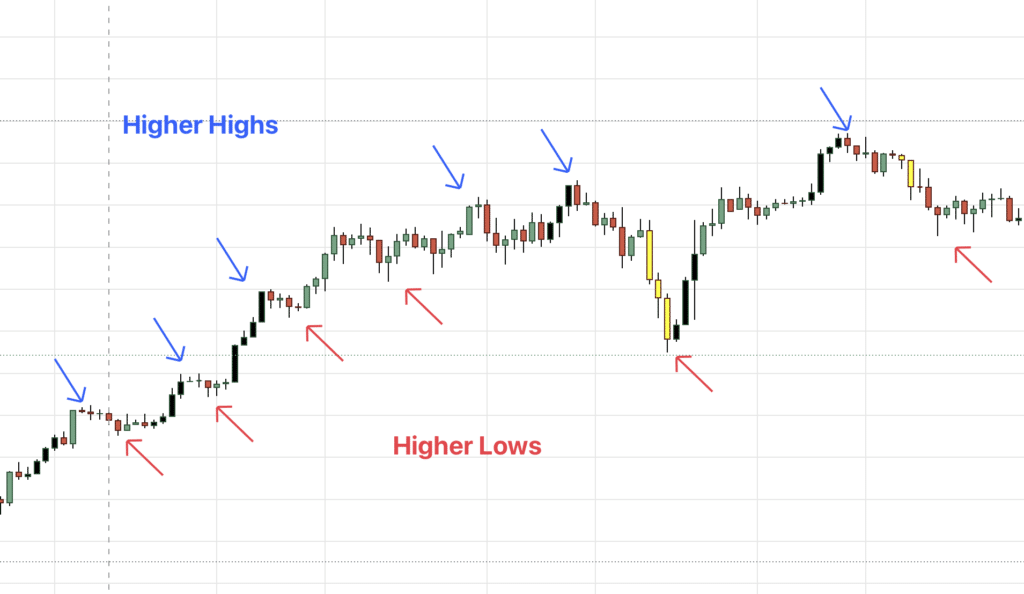
In an uptrend, prices will make higher highs and higher lows. A higher high is defined as a price point that is higher than the previous high. In an uptrend or bullish market, it’s important that you are only looking for buys. Unless you are an experienced counter trend trader, it only makes sense to trade in situations where you have the highest probability for success. Understanding how to read the market will increase your win rate by knowing what to look for within specific market conditions.
For example, if a stock, a crypto or a forex pair is in an uptrend, and its price makes a new high but fails to make a higher low, it may indicate that the uptrend is losing momentum and the price may reverse.
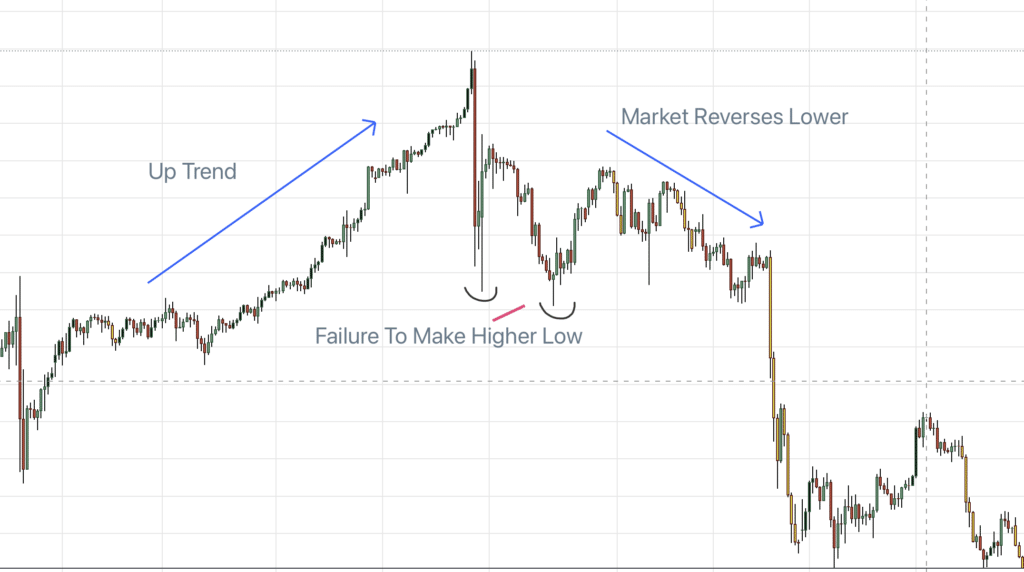
Downtrend
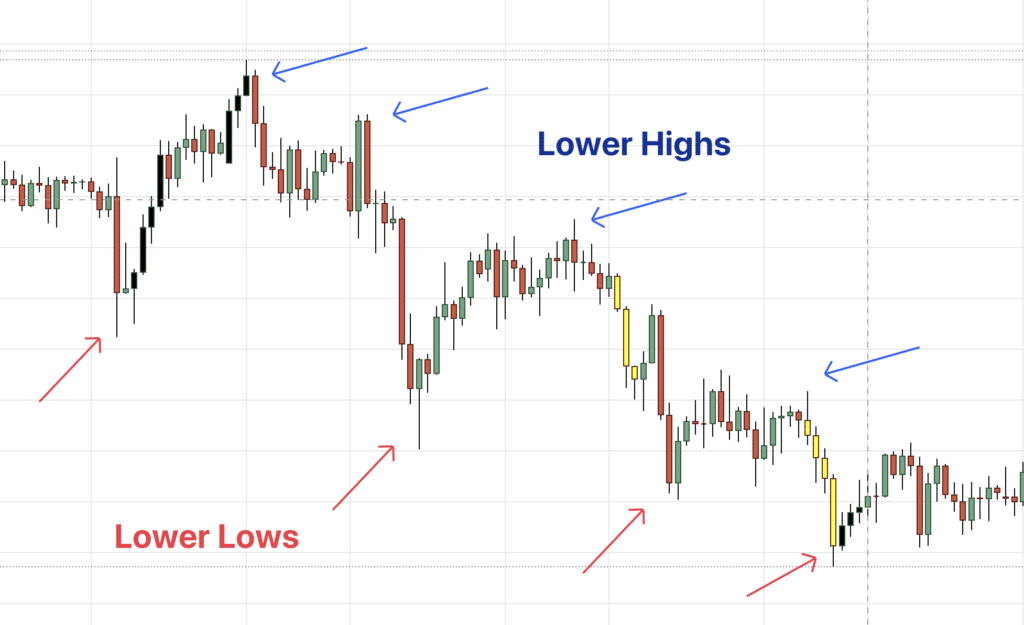
In a downtrend, prices will make lower highs and lower lows. A lower low is defined as a price point that is lower than the previous low. In a bearish trend we want to make sure that we are only looking to sell. Again this will keep you out of trouble taking on unnecessary trading losses. Recognizing lower lows and lower highs is an integral skill of identifying overall market structure.
For example If a stock is in a downtrend and its price makes a new low but fails to make a lower high, it may indicate that the downtrend is losing momentum and the stock may be due for a reversal.
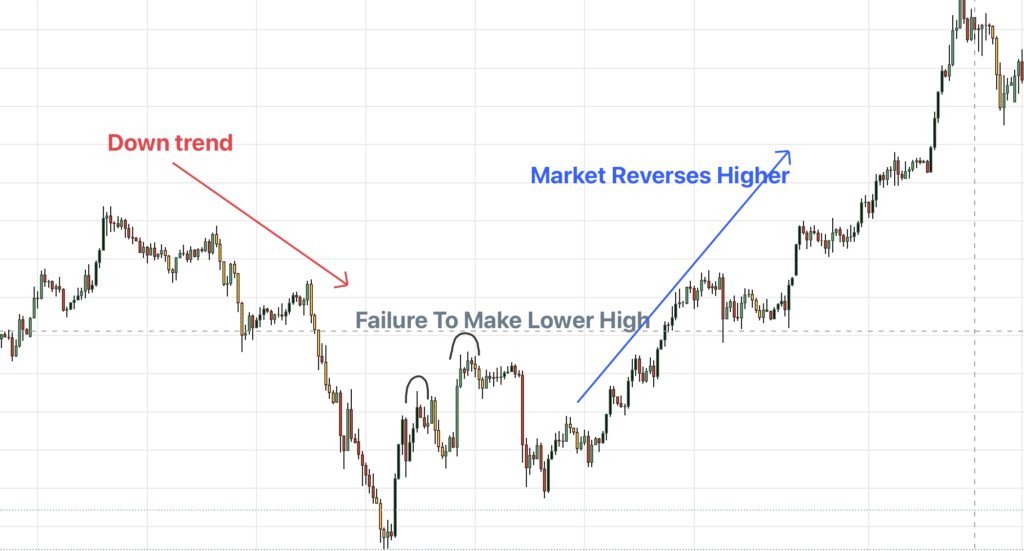
Ranging
A ranging market is typically characterized as a period of consolidation. This happens when price is contained within a level of support and resistance. When a market is ranging it is safe to look for buys and sells. However, the fx market as a whole can be characterized as not moving much, because price is staying within a range or a price level. It is not until price breakouts of the range, that we see a continuation of the previous trend or a reverse in the market.
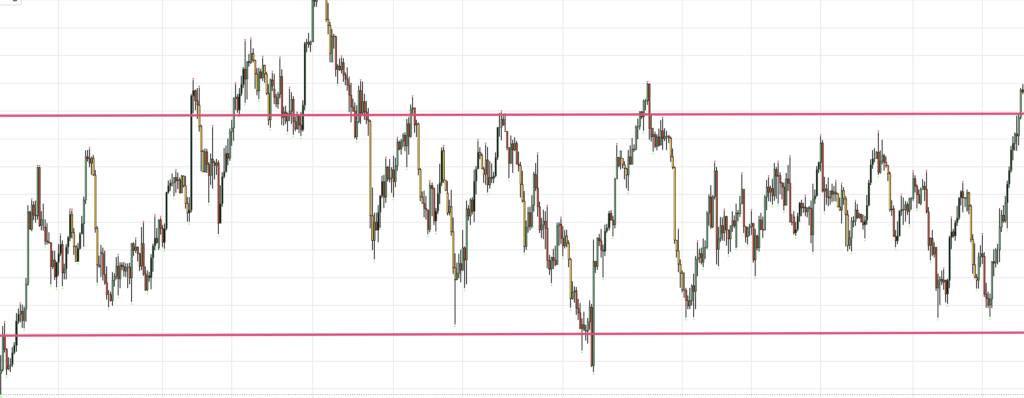
When price cannot break above or below a specific level, we consider this consolidation or a ranging market. As forex traders, we are slaves to volatility so it is best to simply not trade when a market is ranging because if the price is not moving, then you are not profiting.
Identifying Market Structure
Defining uptrends and downtrends provide a valuable framework to make informed trading decisions. By incorporating these indicators into your analysis, you can gain a better understanding of the market and increase your chances of success in the forex and stock market.
When discussing market structure in terms of price action and market flow, it’s essential to recognize that technical analysis, such as support and resistance levels or chart patterns, can provide valuable insights for traders. However, some critics argue that relying solely on technical analysis may not always lead to profitable trades, as it doesn’t take into account fundamental factors that can influence price movements.
In addressing these concerns, it’s crucial to understand that successful trading often involves a combination of both technical and fundamental analysis. While price action can help traders identify potential entry and exit points, incorporating fundamental analysis can provide a more comprehensive view of the market, taking into account economic indicators, geopolitical events, and other factors that can impact the market.
By combining these approaches, traders can develop a well-rounded trading strategy that acknowledges the limitations of each method while capitalizing on their strengths. It’s also worth noting that no trading strategy is foolproof, and it’s essential to manage risk and adapt to changing market conditions.”
In the next article we will talk about support and resistance.
Technical analysis resources
A comprehensive resource to delve deeper into market structure and technical analysis is the book “Technical Analysis of the Financial Markets” by John J. Murphy. This book provides an extensive overview of various technical analysis tools and techniques and offers practical guidelines for applying them in different market conditions. It serves as an excellent starting point for traders seeking to deepen their understanding of market structure and enhance their trading skills.
Reference: Murphy, J. J. (1999). Technical Analysis of the Financial Markets: A Comprehensive Guide to Trading Methods and Applications. New York Institute of Finance.





